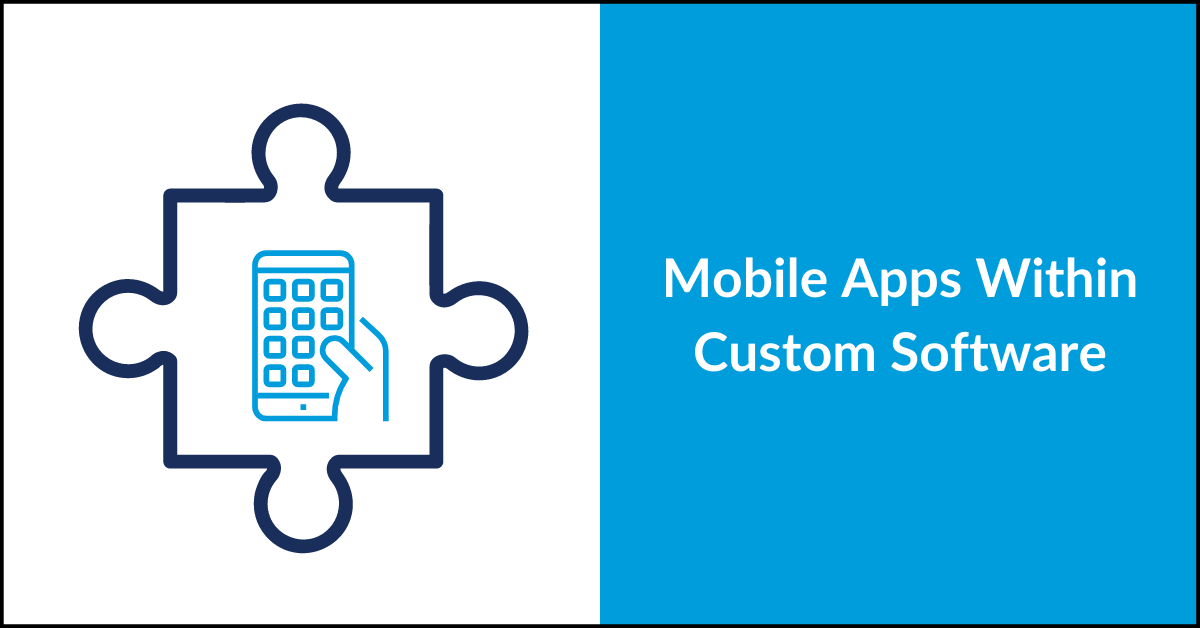
If you look at the increasing demand for mobile app developers, you may think that mobile apps will account for
the biggest chunk of software demand in the near future. Combine that with the increasing number of mobile internet users and your mobile app strategy seems obvious.
But if you jump right to, “We need a mobile app,” based on this information, you’ll miss the bigger picture. Mobile apps are one element of a mobile strategy, which is one element of an overarching software strategy. Mobile apps, when and if they make sense for your business, need to be planned as part of your bigger software ecosystem.
Where Does Your Mobile App Fit In?
If you want to develop a mobile game or a fitness app, that’s one thing. These are often stand-alone mobile apps that can be used independently. But you’ll often find that not even those are 100% stand-alone. Most likely, they communicate
with a browser-based content management system and other systems.
Applications that run businesses are often even more connected to a larger infrastructure. So the first question to ask is:
Do you really need a mobile app?
Download our free guide to learn if a mobile app makes sense for your business.
If you’ve established that you do need a native mobile app, the next step is to identify how it fits into your company’s software ecosystem.
For example, you may already have a web app that your team uses to manage internal processes, along with a web app that customers can access on desktop and mobile browsers. Adding a native mobile app may make sense if your team and/or customers want to
complete on-the-go tasks that require offline access, superior performance, or device functionality (like GPS, camera, and push notifications).
To put this idea into a tangible example, let’s look at Microsoft Teams, which is what our team uses for instant messaging (IM) communication. When we’re at our desks, we can use the desktop app or the browser-based web app. But when we’re
on the go, we can use the native iOS or Android app to see messages and send replies. By having the native mobile app on our devices (for those who wish to do so), it allows us to get push notifications, upload photos, utilize the phone’s microphone,
and more that wouldn’t be possible--at least not as easily--on the mobile browser-based version.
You may not be a Microsoft-type business, but you can probably see from this example how different versions of a tool are useful in different situations for different users.
How to Plan for a Mobile App
As always, the place to start when you’re thinking about mobile app development is: purpose. What are
you trying to achieve with a mobile app? Is it just something that “it seems like we should have because Company XYZ has it,” or will it benefit you, your team, and/or your users?
Here are some questions to ask yourself as you think about your mobile strategy:
Do you need a responsive web app, native mobile apps, or both?
What device functionality (e.g., GPS, camera, push notifications) could you tap into with a native mobile app?
Do users need to access your system offline—without reliable internet access?
Do your users expect, want, or need a native mobile app for their device?
How will the mobile app be similar to and different from the responsive web app?
While consumers are fairly mobile-first at this point, a lot of business is still conducted
on desktops and laptops. If you’re a B2C company, your considerations for your mobile strategy will be different than if you’re a B2B company. As a custom software development company that works with a lot of enterprises and B2B companies, we build systems based on users’ needs, no matter which platforms that entails.
Make sure you work with a development partner that asks you questions, considers your unique needs, and carefully plans the workflow through your entire software ecosystem, mobile apps included.
Think you might need a mobile app? Or did we make
you rethink your mobile strategy? Let’s talk.
Reach out.